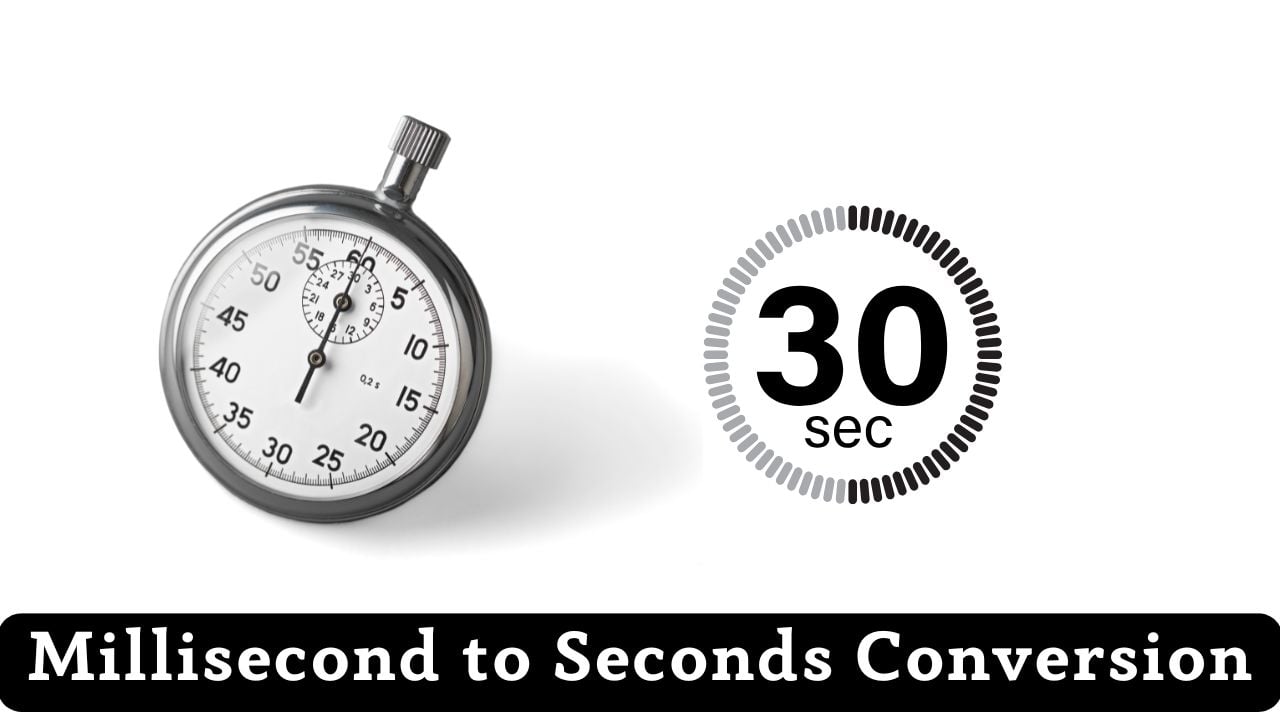Milliseconds to Seconds Calculator
Precise time conversion with detailed breakdowns, quick presets, and educational insights

Milliseconds to Seconds: The Essential Guide
There are exactly 1,000 milliseconds in one second. This fundamental relationship is crucial in programming, science, and everyday life. Converting between milliseconds and seconds enables precise timing, animation, and technical applications. Explore formulas, quick tables, and real-world uses below.
The Conversion Formula
Seconds = Milliseconds ÷ 1,000
Milliseconds = Seconds × 1,000
1 second = 1,000 milliseconds. This is a fixed, universal relationship in all timekeeping systems.
Example: 2 seconds × 1,000 = 2,000 milliseconds, or 2,500 milliseconds ÷ 1,000 = 2.5 seconds
Milliseconds & Seconds in Practice
1 Millisecond: 0.001 seconds (1/1,000 of a second)
1 Second: 1,000 milliseconds
Applications: Animation timing, stopwatch precision, video/audio sync, network latency, scientific measurement
Milliseconds are used for high-precision timing, while seconds are the standard for most time displays.
Quick Reference Table: Milliseconds to Seconds
| Milliseconds | Seconds | Common Usage |
|---|---|---|
| 1 | 0.001 | Shortest measurable interval |
| 100 | 0.1 | Fast animation frame |
| 500 | 0.5 | Half a second |
| 1,000 | 1.0 | One second |
| 10,000 | 10.0 | Short timer |
| 60,000 | 60.0 | One minute |
Frequently Asked Questions
How do you convert milliseconds to seconds?
Divide the number of milliseconds by 1,000. For example, 2,500 milliseconds ÷ 1,000 = 2.5 seconds.
Why are there 1,000 milliseconds in a second?
The metric system defines 1 second as 1,000 milliseconds for easy decimal-based calculations and scientific precision.
Where are milliseconds-to-seconds conversions used?
In programming (timers, animations), science (experiments), sports (stopwatches), and technology (network latency, video/audio sync).
Is the conversion always exact?
Yes, 1,000 milliseconds always equals 1 second. The relationship is fixed and universal.
How do you handle decimal seconds?
Decimal seconds (e.g., 2.5 seconds) are converted by multiplying by 1,000. For example, 2.5 seconds × 1,000 = 2,500 milliseconds.
What is a millisecond used for?
Milliseconds are used for measuring very short time intervals, such as animation frames, network ping, and scientific experiments.
Programming & Technical Applications
Web Development: Milliseconds are used for animation timing, debounce intervals, and measuring response times. Seconds are used for user-facing timers and countdowns.
Media & Games: Video and audio players use milliseconds for sync, while games use them for frame timing and event scheduling.
Science & Engineering: Experiments and measurements often require millisecond precision for accuracy.
Tip: Use milliseconds for calculations, but display seconds for user-friendly interfaces.
